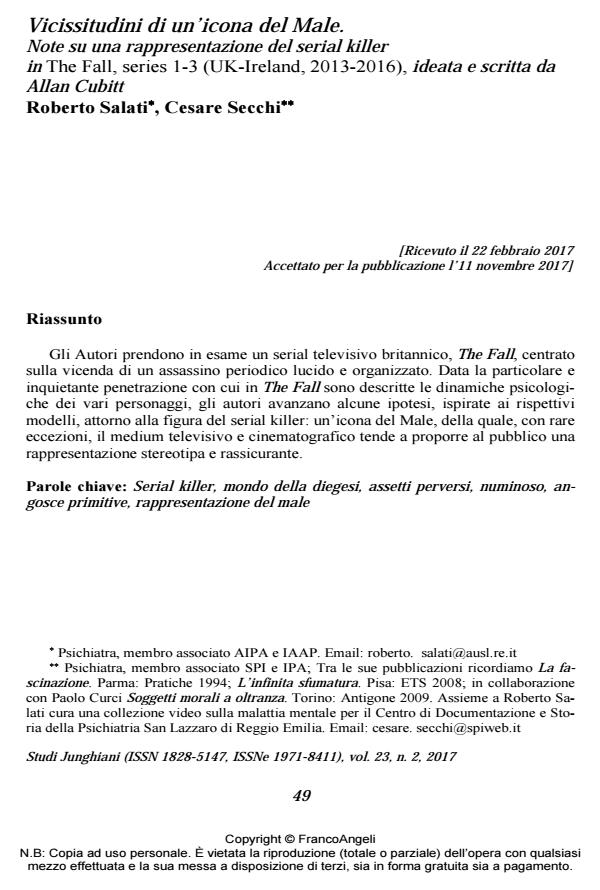Vicissitudes of an Evil Icon. Notes on a representation of the serial killer in The Fall, series 1-3 (UK-Ireland, 2013-2016), conceived and written by Allan Cubitt
Journal title STUDI JUNGHIANI
Author/s Roberto Salati, Cesare Secchi
Publishing Year 2018 Issue 2017/46
Language Italian Pages 17 P. 49-65 File size 202 KB
DOI 10.3280/JUN2017-046003
DOI is like a bar code for intellectual property: to have more infomation
click here
Below, you can see the article first page
If you want to buy this article in PDF format, you can do it, following the instructions to buy download credits

FrancoAngeli is member of Publishers International Linking Association, Inc (PILA), a not-for-profit association which run the CrossRef service enabling links to and from online scholarly content.
The Authors examine The Fall, a British TV series, whose plot centres on a structured and efficient serial killer. In spite of the stereotypical and reassuring portrayal often offered by cinema and television, in The Fall the psychological dynamics of the characters are represented with sharp and uncanny insight. In the end, the Authors formulate some hypothesis, inspired by their respective theories, about the serial killer as an icon of evil.
Keywords: Serial killer, fictional world, perverse structures of mind, numinous, primitive anxieties, representation of evil
Roberto Salati, Cesare Secchi, Vicissitudini di un’icona del Male. Note su una rappresentazione del serial killer in The Fall, series 1-3 (UK-Ireland, 2013-2016), ideata e scritta da Allan Cubitt in "STUDI JUNGHIANI" 46/2017, pp 49-65, DOI: 10.3280/JUN2017-046003